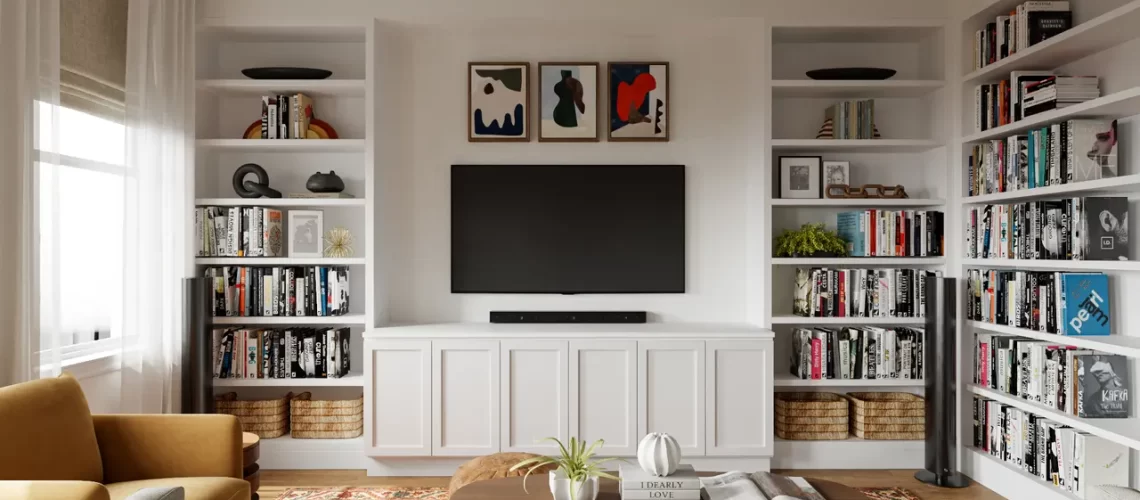In the bustling rhythm of modern life, our living spaces have become more than just areas to inhabit; they’re extensions of our personalities, productivity hubs, and sanctuaries of comfort. This spotlight on functional interior design holds the key to transforming these spaces into optimized environments that support our daily activities, enhance our well-being, and reflect our personal style. Dive into the world of functional interior design to explore how it reshapes our homes and lives for the better.
Understanding Functional Interior Design
Functional interior design goes beyond the surface, embedding itself in the very core of how spaces are planned, organized, and experienced. It’s a philosophy that prioritizes the functionality of a space as much as its aesthetics, ensuring every design element serves a purpose. With a focus on maximizing efficiency and utility, this approach tailors environments to fit the unique lifestyles and needs of the inhabitants, making everyday living smoother and more enjoyable.
The principles of functional design—such as ergonomic furniture, smart storage solutions, and adaptable living areas—come together to create spaces that are not only beautiful but also incredibly practical. By considering factors like natural light, color theory, and spatial layouts, designers can craft environments that boost productivity, inspire creativity, and promote relaxation.
The Evolution of Modern Living Spaces
As the definition of ‘home’ expands in the 21st century, so does the approach to designing these spaces. Modern living spaces are no longer static environments but fluid areas that adapt to our changing needs. This evolution reflects a deeper understanding of how design influences our daily lives, leading to more conscious choices about the layout and functionality of our homes.
Technological advancements and the shift towards remote work have further emphasized the importance of having a versatile living environment. Homes now often embody multiple functionalities, blending work, leisure, and living spaces seamlessly together. This shift has sparked innovative design solutions that enable these multifunctional lifestyles, challenging traditional notions of space utilization.
Key Principles of Functional Design in Homes
The bedrock of functional interior design lies in a few key principles: simplicity, efficiency, and personalization. Simplicity in design doesn’t strip away creativity; instead, it pares down to essential elements that enhance functionality. Efficiency involves making the most out of every space, using smart design to create tidy, organized environments. Personalization ensures the space reflects the individual’s style and needs, making the home truly theirs.
Maximizing Small Spaces for Greater Utility
In urban environments where space is at a premium, the challenge of designing small living areas has become increasingly common. Functional interior design shines in these scenarios, introducing clever solutions to maximize space without sacrificing style or comfort. From multi-purpose furniture to hidden storage, these strategies empower residents to live large within a limited footprint.
Innovations such as foldaway beds, extendable tables, and built-in shelving units are just the tip of the iceberg. Designing for small spaces requires a creative mindset that can see potential in every corner, utilizing vertical space, underutilized nooks, and even ceiling heights to create a sense of expansiveness.
Additionally, the use of light colors, mirrors, and transparent materials can help to visually expand a small space, making it feel airy and open. These optical illusions, combined with practical design solutions, transform cramped apartments into comfortable, functional homes.
Sustainable Practices in Functional Interior Design
Sustainability and functional design often go hand in hand, as both philosophies emphasize mindful use of resources and longevity. By choosing durable materials, repurposing furniture, and minimizing waste, functional interior design aligns with eco-friendly practices to reduce environmental impact.
Beyond material selection, sustainable design also involves considering the energy efficiency of spaces. This can include maximizing natural light, enhancing insulation, and choosing energy-efficient appliances. Together, these strategies not only contribute to a healthier planet but also create spaces that are cost-effective and comfortable for long-term living.
Innovations Transforming Interior Design Today
The digital age has introduced a wave of innovations in interior design, from smart home technology that enhances living comfort to 3D printing that offers customized design options. These technological advances merge seamlessly with the principles of functional design, opening up new possibilities for personalizing spaces in ways that were once unimaginable.
Virtual reality (VR) and augmented reality (AR) technologies also offer exciting prospects for interior design. They allow clients to visualize changes before they are made, ensuring the end result aligns perfectly with their expectations. As these technologies continue to evolve, they will further enrich the process of creating functional and personalized living environments.
Practical Tips for Employing Functional Design in Your Home
Adopting a functional approach to interior design in your own home starts with evaluating your lifestyle and needs. Identify areas where improvements can be made in terms of efficiency or aesthetics, and consider multi-functional furniture and storage solutions that can enhance the space.
It’s also helpful to declutter regularly, keeping only what you need and love. This not only creates more physical space but also contributes to a clearer, more focused environment. Incorporating elements of nature, whether through plants, natural light, or natural materials, can also improve the functionality and feel of a space, promoting wellness and tranquility.
Empowering Spaces, Enhancing Lives
As we’ve journeyed through the transformative power of functional interior design, it becomes clear that this approach is not merely about aesthetic appeal. It’s a methodical embrace of simplicity, functionality, and sustainability that caters to the evolving needs of modern living. By balancing practicality with personal taste, functional interior design converges the paths of utility and elegance, making every square foot of our living spaces count. In the canvas of our homes, this blend of practical design principles offers a roadmap to create spaces that empower, inspire, and rejuvenate.


